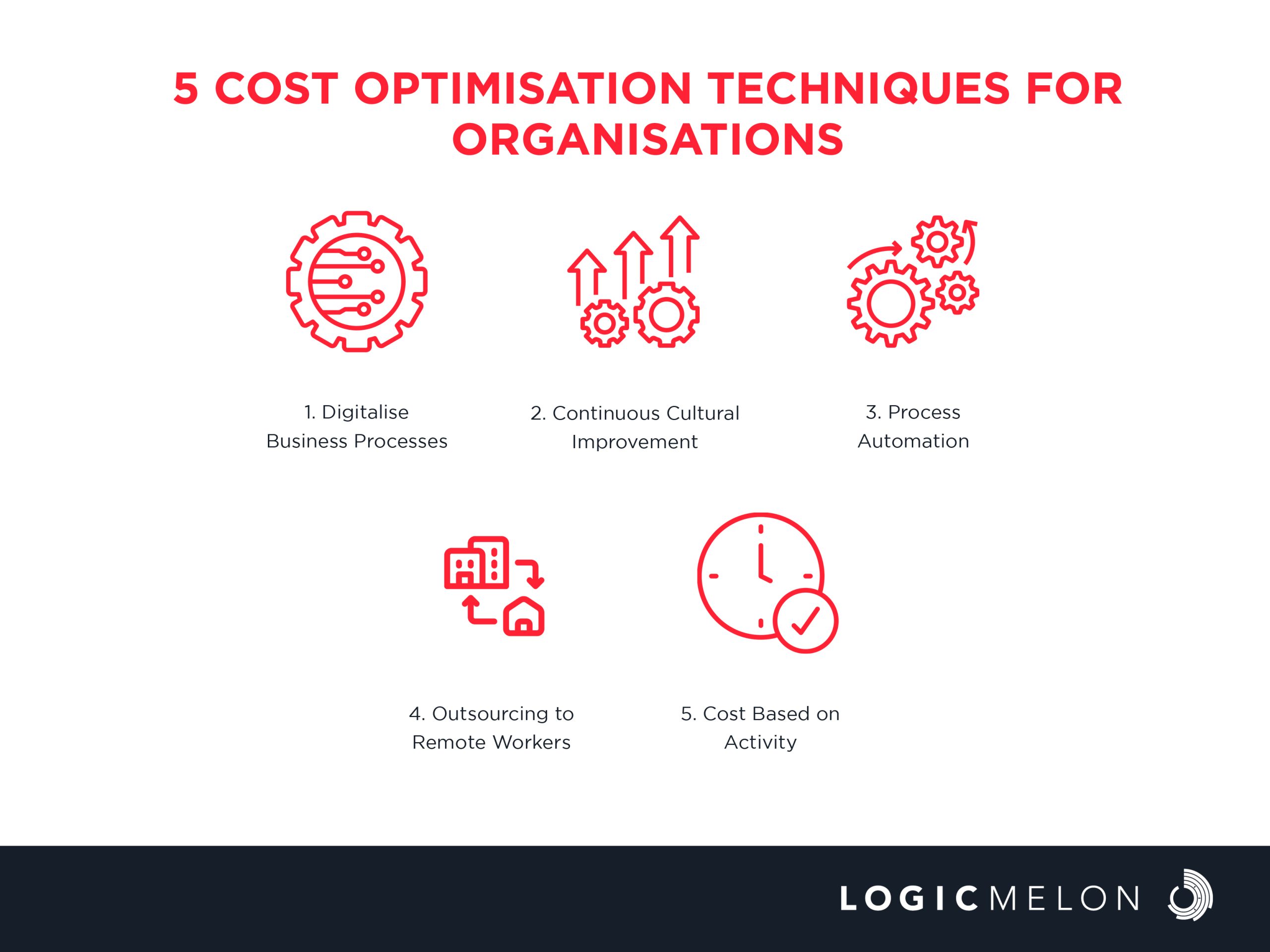Cost Optimisation Techniques for Organisation
A well-designed cost optimisation platform helps with business transparency when it comes to saving costs for the organisation. Cost optimisation is a critical aspect of modern business operations. One of the ways for organisations to maximize their profitability is to minimize their costs. This step is important for organisations since it generates more revenue and improves the value provided to customers.
Benefits of Cost Optimisation
1. Identifies Cost Savings
This process assists in identifying cost-cutting opportunities, locating billing errors, and planning products to save money. This platform also provides an opportunity to analyse the insights and gain visibility into spending. Cost savings are essential for every organisation that strives to succeed.
2. Automates the Process
Automating helps to automate data storage and allows employers to access data in an effective way, giving them the ability to utilise this data to create business value in a faster and more efficient manner. Automating the process also eradicates human errors, thereby improving the quality of work and reducing the manual labour involved in the process.
3. Risk Mitigation
Cost optimisation platforms improve the level of compliance in the organisational process and reduce the manual work required to audit various documents. Proper risk mitigation helps to analyse the potential risks involved and helps organisations take precautionary measures as well as prioritise their plans to minimise the impact.
4. Avoids Costs
Cost optimisation helps reduce the overall cost and reduces the risk of overpaying. Analysis of the cost optimisation platform will provide an accurate view of the data, help organisations keep track of overpaying, and ensure compliance.
This process helps streamline activities and optimises the workflow to support and improve the productivity of the organisation. Cost optimisation techniques encourage automation and digitalisation processes to reduce the amount of manual work done in the organisation.
5. Improves Business Efficiency
This helps improve the overall efficiency of the operation. Organisations can use cost optimisation techniques to maximise production without increasing costs, which improves business efficiency.
Difference between Cost Optimisation and Cost Cutting
There is a difference between cost-cutting and cost optimisation. Cost cutting is a one-time action, while cost optimisation is a continuous process. Cost optimisation which is business-focused can be used to cut costs faster. This is the proactive strategy followed in trying to get the most out of the spending.
Cost optimisation is important for the business to function effectively and efficiently and is a great way to maximise savings. Cost optimisation is done to identify and reduce mismanaged or excess resources, recognize the workload structure in the organisation and allocate the costs in an efficient manner.
5 Cost Optimisation Techniques for Organisations
Here is the list of cost optimisation techniques for organisations,

1. Digitalise Business Processes
A digitalised business process helps eradicate human errors and improves the quality of work done in the organisation. Digitalising the business process helps optimise costs by reducing the amount of manual work to be done.
2. Continuous Cultural Improvement
Organisations must have their own mission, vision, and values, and employees must adapt to them to have an efficient and effective way of finishing tasks. The organisation also has to consider continuous cultural improvement.
3. Process Automation
Process automation is the use of technology to function in order to accomplish the organisation’s goals and objectives. An automation process helps to store data in an automated way, simplifies the process, and helps employers rely on the data to get necessary information whenever needed.
4. Outsourcing to Remote Workers
Organisations have to outsource to remote workers in order to expand their operations. This maximises productivity in the organisation. Outsourcing remote workers is managed by the hiring team and changes according to the specific project life span. While this process is inexpensive, it does not always produce quality services and requires close supervision.
5. Cost Based on Activity
Analyse the allocated resources and determine the corrective actions to reduce the amount wasted over time. An efficient way to ensure the use of business resources is by measuring their costs based on their activity. This method identifies the activities in the organisation and assigns the cost of each activity for all products and services according to their actual consumption.
Frequently Asked Questions
1. Is there a difference between cost-cutting and cost optimisation?
Cost cutting is a one-time approach, while cost optimisation is a continuous process. The cost-cutting process includes laying off employees or reducing salaried workers during a crisis, whereas cost optimisation includes automating and digitalising the business process to boost efficiency and effectiveness in the organisation.
2. What are the ways in which organisations can optimise costs?
Organisations can optimise costs by digitalising the business process, continuously improving the work culture, automating the process, outsourcing to remote workers, and calculating costs based on the activity.
3. What are the benefits of cost optimisation?
The cost optimisation process helps business leaders make decisions on whether to invest in growth and digitalisation. This is a business-focused strategy aimed at maximizing production while increasing costs.
Closing Thoughts
Every organization that strives to achieve its goals in an efficient and effective manner must employ cost-cutting techniques. There are situations where cost cutting can perform better than cost optimisation and vice versa. It is important for every organisation to analyse the situation and take the necessary actions in order to finish tasks in an effective and efficient manner.
These techniques also include using software to analyse the cost optimisation in the organisation. These include obtaining the optimum price for business purchases, standardising and simplifying the cost involved in technologies, and automating and digitalising various business processes across the organisation.
LogicMelon
Award-winning recruitment software that will find, attract, hire and analyse the way you want to work. At LogicMelon, we have experienced software recruitment marketing specialists to help you build effective recruitment solutions supported by the best customer service you’ll find anywhere!
Email: sales@logicmelon.com or call LogicMelon (UK) +44 (0) 203 553 3667 (USA) +1 860 269 3089
How to Give the Best Interview Feedback
By providing valuable interview feedback, you can help another person learn from their experience and grow as a professional.
HR KPI: Top Key Performance Indicators for Human Resources
Establishing HR KPIs is key to unlocking the full potential of your company’s human capital. Read the blog to know more.
Winning with your Talent Management Strategy
In this blog, we’ll explore the importance of talent management strategy and provide practical tips to help you implement it effectively.


